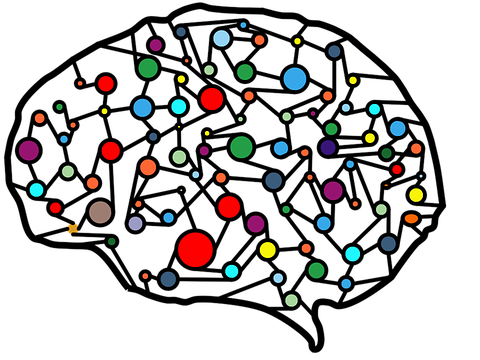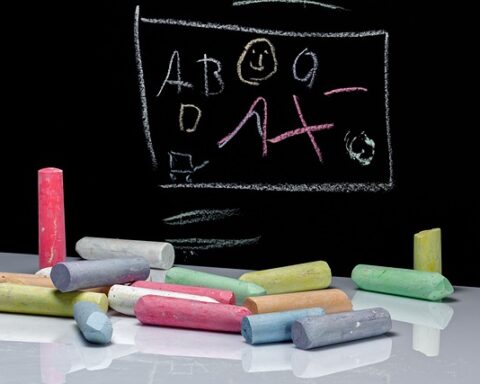At her excellent Inter-ELTA workshop in April, Marcela Harrisberger invited us to approach teaching and learning from a neuroscientific angle. Drawing our attention to the bigger picture, she shared what a teacher can do to ensure that the how of learning is tended to just as much as the what.
First off, Marcela stated an obvious but underrated fact: information is not the same as knowledge. Absorbing information is relatively passive and automatic. Knowledge, however, comes with regular practice and application of what has been learned.
Information is not knowledge.
Besides, the brain routinely hijacks learning – because its main function is to separate the wheat of necessity from the chaff of ornamental bric-a-brac. With its limited working memory, forgetting redundant information is a basic survival mechanism. Keeping you safe and sound: high on the agenda. A critical discussion of Plato’s allegory of the cave: not so much.
Thus, in order to convince your brain that what you are about to learn is important, it requires constant nudges and reminders to bypass the “spam” filter and allow content to finally be stored in the long-term memory.
To really master a skill, an ongoing routine and practice is key.
You need your students’ permission
From a neuroscientific perspective, it is the learners’ job to do the learning (i.e. nudging the brain). That’s right – your students hold the power over whether they learn from you or not. It’s the teacher’s job to provide information, learning strategies and to be a go-to-person during the process.
As a consequence, you can only help your learners succeed if that’s something they really want and allow you to do. Marcela pointed out that a student can easily waste loads of money on weekly lessons through neglecting their own personal learning routine.
Why motivation is overrated
Since our brains operate in perpetual energy-saving mode, there’s a simple factor to consider: If you wait until you feel the kiss of the muse, you may end up waiting until the cows come home.

That’s why Marcela suggests just taking action anyway and building a routine that cuts through the Monday morning feels.
So while motivation is essential (especially in the beginning), through regular practice, learning easily becomes a habit that doesn’t require constant self-motivation.
Mind the forgetting curve
With the brain’s tendency to weed out irrelevant details, information generally has a short shelf life. This is called the forgetting curve, and it sets in almost immediately whenever we learn something new.
In fact, Marcela pointed out that, according to the German psychologist Hermann Ebbinghaus, 20 minutes after a lesson, the brain will have forgotten 60% of what you’ve learned. After a day or two, this will amount to 75%, with the rest gradually fading out over the following days and weeks.
Bummer? Absolutely…but there is something you and your students can do about it!
Stop forgetting – start reviewing
The best countermeasure against forgetting is to prevent it every time just before the forgetting curve strikes.
Thus, the best way to go about this is reviewing learning resources at specific intervals. Marcela suggested a minimum of three reviews, while highly recommending doing four:
- First review: right after the session
- Second review: 24 hours later
- Third review: one week later (or a little sooner)
- Fourth review: one month later (or a little sooner)
As learning resources, well-crafted notes taken during the lesson are the most effective (e.g. notes of new words, pronunciation tips, aha-moments).
More tips for staying on track
To boost learner motivation, Marcela gave us three catchphrases that make it easier to stay on target:
1) “Where attention goes, energy flows.”
Since the brain likes efficiency and can’t really juggle two things at once, it’s best for learners to focus on the process and not on the outcome of their efforts. If part of their attention is in “waiting for results” mode, it will be harder to make progress. Just tell your learners that if they follow the right strategy, success will naturally follow.
This goes hand in hand with appreciating baby steps. Constant small improvements will quickly add up. This is also known as “the 1% rule” of tackling challenges – making little changes counts, even if they just seem to make up 1%.
2) “What gets scheduled gets done.”
While good intentions are noble, they are sometimes not enough to ensure that we actually get things done. Therefore, Marcela recommended for learners to schedule their reviews. A practical way to schedule your reviews is to do it right after the very first one (the one immediately after the lesson).
3) “What gets measured gets improved.”
Another way to keep motivated is to document your progress on paper. For this, you can print out a one-page yearly calendar and check off the date after each reviewing session.
Your progress isn’t what you’ve learned, but that you got the review done.
This will give you the satisfaction of visual progress and a sense of accomplishment. You’ll be looking forward to the next review.
Tips for the classroom
If you want to know what can be a game changer in the classroom, take Marcela’s advice and turn the regular student-teacher dynamic upside down.
Focus less on stuffing your learners’ brains with knowledge.
Instead, use retrieval practice to pull out of your students what they already know and remember. If they are self-conscious about speaking, tell them not to worry about it, but to just fire away and talk to you and each other.
Don’t think – just talk to me.
One easy exercise to do regularly is to ask your learners what they remember from the last lesson. Other ways of retrieving knowledge are quizzes, gap-fills, and interrupting the lesson to give your students time for writing down everything they remember from the last 20 minutes.
Conclusion – SMART learning is a smart idea
Some of the key takeaways from Marcela’s workshop were that smart learning isn’t all about perfect lessons plans and transfer of knowledge. Rather, it’s about eliciting knowledge from your learners at regular intervals, shared responsibility and building a brain-friendly learning routine. That way, learning becomes more effective, motivating and enjoyable.
Recommended Reading
Free materials for retrieval practice: retrievalpractice.org
Atomic habits by James Clear: https://jamesclear.com
Powerful Teaching: Unleash the Science of Learning by Pooja K. Agarwal and Patrice M. Bain: https://www.goodreads.com/book/show/42450467-powerful-teaching
Sandra is ELTABB's Chair and the current editor of the ELTABB journal. She holds an MA in English and is passionate about brain-friendly language learning and teaching. Likes Shakespeare and Venetian lute music.









